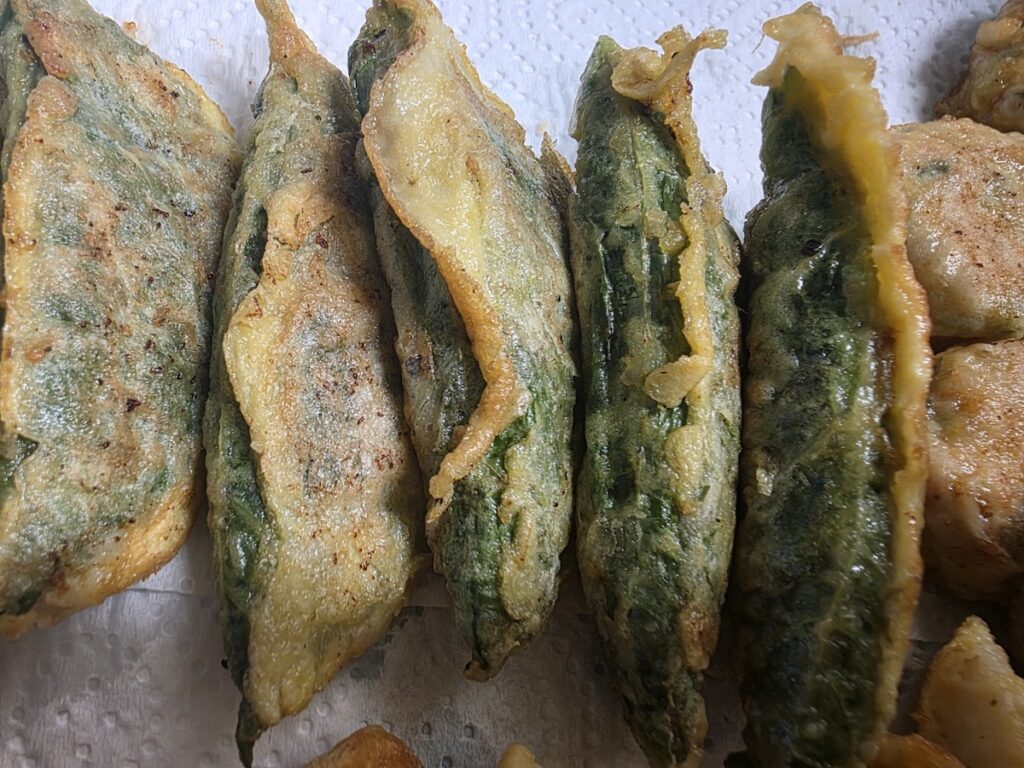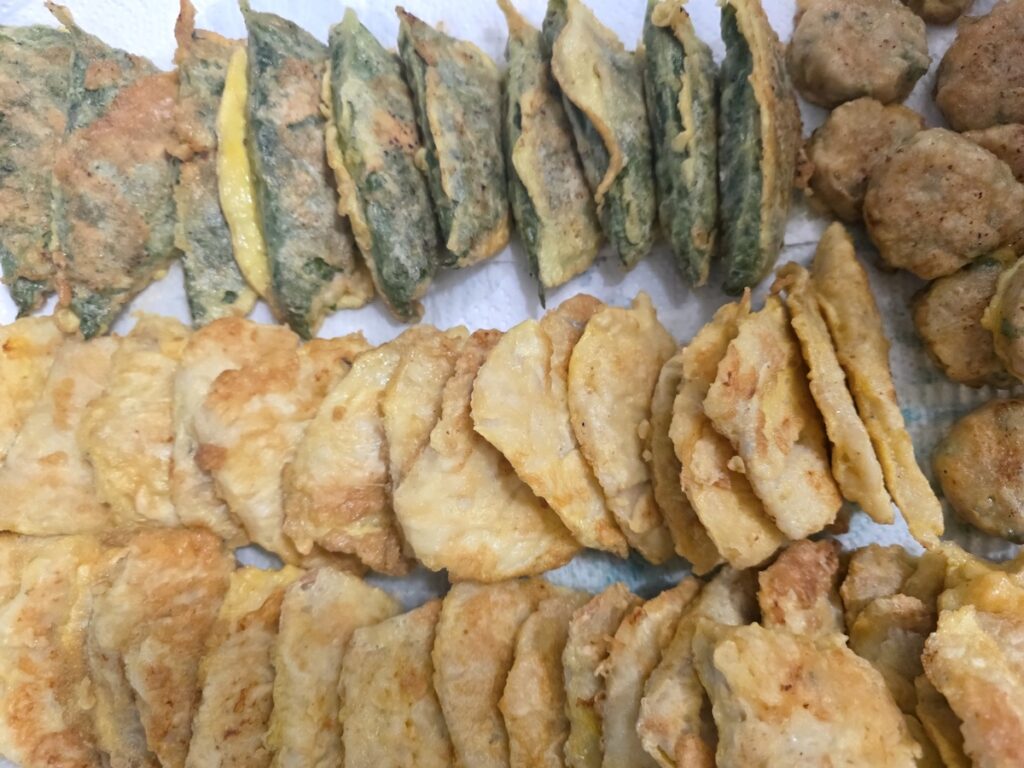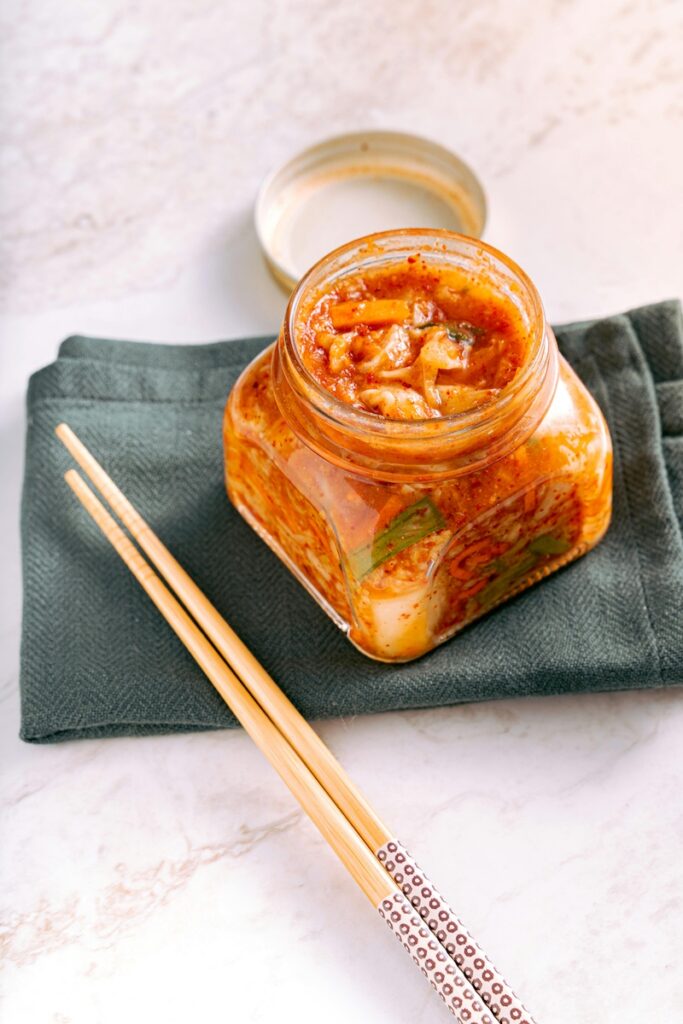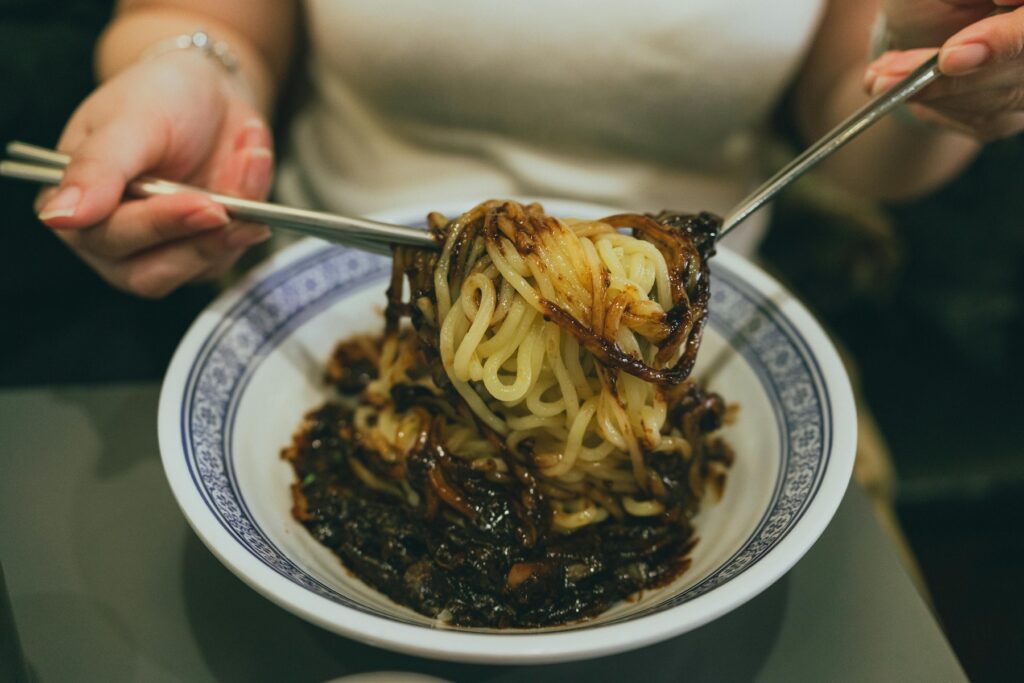When you think of Korean food, you might picture bibimbap, kimchi, or Korean barbecue sizzling on a grill.
But during Korea’s biggest holidays—Chuseok (Korean Thanksgiving) and Seollal (Lunar New Year)—one dish quietly takes center stage in every home: jeon (전), the golden, savory pancake that unites generations and fills every kitchen with the sound of sizzling oil.
Recently, this humble dish has also become a pop culture symbol, appearing in K-dramas, K-pop variety shows, and even Hollywood interviews where Korean stars fondly recall their moms’ or grandmas’ jeon.
So, let’s explore why jeon is so deeply loved in Korea, how it’s made, what it means—and how it’s even making waves in global entertainment.
🥢 What Exactly Is Jeon?
“Jeon” (pronounced john) is Korea’s answer to the pancake—but with its own cultural soul.
It’s made by dipping sliced vegetables, meat, or seafood in flour and egg, then frying them until lightly golden and crisp.
It’s not breakfast food; it’s a celebratory dish, a sharing food, and for many Koreans, the smell of jeon frying in sesame oil instantly signals “holiday is here.”
Common types include:
- Dongtae-jeon (동태전): Pollack fish pancake
- Hobak-jeon (호박전): Zucchini slices
- Kimchi-jeon (김치전): Kimchi pancake
- Gochu-jeon (고추전): Fried chili stuffed with minced meat
- Buchu-jeon (부추전): Garlic chive pancake
- Donggeurangttaeng (동그랑땡): Mini meat patties loved by kids
Every region has its favorite style—from light and crisp Jeolla-do versions to hearty, egg-rich Seoul styles.

🎬 Jeon in K-Dramas and Pop Culture
If you’ve watched “Crash Landing on You”, “Hospital Playlist”, or “Reply 1988,” you’ve seen characters gathered around a kitchen counter, flipping jeon while laughing with family.
That’s not just a set detail—it’s part of real Korean life.
In “Reply 1988”, the mothers prepare piles of jeon while chatting about their kids. In “Hospital Playlist”, the characters gather to eat jeon and drink makgeolli after a long day—it symbolizes comfort and connection.
💬 When Celebrities Talk About Jeon
- BTS’s Jimin once mentioned during Chuseok that his favorite holiday food is kimchi-jeon, because it “tastes like home.”
- BLACKPINK’s Jisoo shared in a V Live broadcast that she helps her mother make hobak-jeon every Chuseok.
- Actor Park Seo-joon said on a variety show that he always looks forward to dongtae-jeon made by his mom.
- Even Hollywood-Korean actors like Ma Dong-seok (Don Lee) and Sandra Oh have mentioned jeon in interviews as their “comfort food.”
When K-pop idols post Chuseok photos on Instagram, it’s common to spot jeon on the table beside songpyeon (rice cakes). It’s a quiet but powerful symbol of family and belonging.
🌕 The Meaning Behind Jeon During Holidays
Korean families make jeon as part of the Chuseok ancestral ritual table (charye). Each piece represents gratitude—handmade, round, and golden like the full harvest moon.
It’s also about togetherness.
Families gather to slice, dip, fry, and stack dozens of jeon varieties. It’s labor-intensive, but nobody complains—because this is when stories, laughter, and generations mix in one kitchen.
Foreign visitors often say:
“It’s not just food—it’s a family event.”
And that’s exactly right.
🍳 How Jeon Is Made (The Comfort Sound of Korea)
Making jeon isn’t complicated, but it’s all about patience.
Step 1. Prep — Slice your main ingredients thinly. (Fish, zucchini, tofu, mushrooms, kimchi, etc.)
Step 2. Dust — Coat each piece lightly in flour (buchim garu).
Step 3. Dip — Cover in whisked egg.
Step 4. Fry — Place gently on a lightly oiled pan, medium heat.
Step 5. Flip — Once golden, flip carefully; that sizzle is music to every Korean home.
Even abroad, many Korean-Americans say that hearing that sound instantly takes them back to childhood.
🥂 Jeon Meets Makgeolli – A Love Story
If there’s one perfect pairing in Korean cuisine, it’s jeon and makgeolli (막걸리).
On rainy days, Koreans often say, “Let’s have jeon and makgeolli.”
Why? The sizzling sound reminds people of falling rain. The combination of crispy, savory jeon and the slightly sweet rice wine feels cozy and nostalgic.
Even K-pop stars joke about it:
“Rainy day = Jeon day!” — a phrase used by IU, RM, and Lee Hyori on talk shows.

🌎 Korean Jeon Goes Global
Jeon isn’t just for holidays anymore.
Korean markets in Los Angeles, New York, and Vancouver now sell pre-made jeon packs every Chuseok.
Restaurants like Kang Ho Dong Baekjeong (LA) or BCD Tofu House often feature seafood jeon as side dishes.
In 2024, New York Times Cooking even featured a “Korean Zucchini Pancake” recipe, crediting jeon as “a symbol of Korean comfort food.”
On TikTok, food creators like @KoreanBapsang and @AaronandClaire have viral videos of frying kimchi-jeon, with millions of views from U.S. audiences who describe it as “the most satisfying sound ever.”
🌐 For Foreigners in Korea: Where to Try Jeon
If you’re visiting Seoul or Busan, you don’t have to wait for Chuseok to enjoy jeon.
📍 Best Spots in Seoul:
- Gwangjang Market (광장시장) – legendary for bindaetteok (mung bean pancakes)
- Tongin Market (통인시장) – small stalls with hobak-jeon and dongtae-jeon
- Itaewon / Hannam – trendy fusion spots serving truffle jeon and shrimp pancakes with wine
📍 Outside Seoul:
- Jeonju Hanok Village – famous for traditional jeon platters and temple-style recipes
- Busan Nampo-dong – seafood jeon with fresh squid and green onion
🧘 Jeon Beyond Food – The Symbolism of Care
In Korean families, making jeon is often how love is shown silently.
Parents wake early to prepare them, children help flip them, and the aroma fills the house.
It’s not glamorous—it’s real love disguised as food.
That’s why K-dramas use jeon scenes not for hunger, but for emotion.
Even for foreigners living in Korea, learning to make jeon can feel like learning to belong.
🎁 How You Can Experience Jeon in the U.S.
For readers in California, Texas, or New York, here’s where you can find authentic jeon or join cooking classes:
- H Mart Cooking Class (Los Angeles & Fort Lee) – seasonal Korean food workshops
- Korean Cultural Center Washington D.C. – hosts Chuseok events with jeon-making sessions
- Kimbap Lab (Brooklyn) – serves handmade kimchi-jeon during holidays
If you can’t find these, you can even order a jeon kit from KoreanBapsang.com or try an easy recipe from Maangchi’s YouTube channel.
🏁 Final Thoughts
Whether you’re in Seoul, LA, or New York, jeon is more than a fried pancake.
It’s a warm memory, a sound, and a connection—between people, generations, and now, between cultures.
From K-drama kitchens to celebrity interviews, jeon continues to show what makes Korean food so emotionally rich:
It’s not about flavor alone—it’s about belonging, care, and nostalgia.
So next time it rains, or the holidays come around, grab your pan, crack some eggs, and make a little Korean magic yourself.

